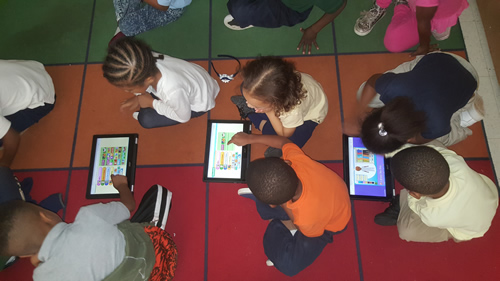The digital divide and the opportunity gap. These are two of the closely related and defining issues that educators and administrators are grappling with today. At DeKalb County School District in Georgia, we set out to create a plan that narrows the digital divide our students are facing at school, in the community, and at home.
By providing our students with the digital technology needed for modern learning, we’ve started closing the opportunity gap caused in part by digital and technological inequities. Throughout this process, we learned important lessons and discovered key takeaways along the way that all schools can integrate into their own initiatives.
Installing hotspots to fire up learning
We started by creating the Digital Dreamers Program, an initiative to reaffirm our commitment to technology. The first step in this program was to install 25,000 hotspots in our schools and throughout the community. We created these connection points to diminish the digital divide and give our students the chance to access digital learning resources outside of school.
The hotspots allowed us to support extended learning because our students could now access the information they needed for their homework from anywhere. Our information technology department worked with Sprint to install these hotspots as a part of the organization’s program to help students across the U.S. have the opportunity to extend their learning day.
(Next page: Tips for closing the digital divide)
Supporting devices everywhere
The hotspots excited students because they could access the internet anywhere, but even though they could access it, we quickly realized that our students didn’t always have devices to connect to the internet when they weren’t at school.
As a result, we launched a 1:1 initiative. We handed out to provide students with Chromebooks protected by Joey 30 Carts from LocknCharge. After distributing the 80,000 devices, we spent time working with our students to help them understand how they could best use the mobile devices at school and at home.
Lessons learned
Throughout our journey, we adapted our program to best fit our students’ needs. Some of our challenges were unique to our school district, but upon reflection, we discovered three lessons that every school district can learn from:
- Be flexible. You need to make sure your procedures and policies around your initiative have some flexibility. As we traveled around the county, we made adjustments due to the diverse student population and needs.
- Have a clear communication plan. No detail is too small to be communicated. Teachers and parents need to understand what tools are in place to protect student data and privacy.
- Be sure your support structure is solid. Schools need the ability to manage the initiative once it’s in place. Complete awareness around how you will handle device support is critical. Also, you must provide an avenue for stakeholders to provide continuous feedback about the initiative to make ongoing improvements.
Building on success
With our 1:1 and connectivity initiatives in full force, we’ll continue to build on our early success. We hope to give our students access to devices earlier in the school year to use student registration and parent open house to distribute the devices. This plan would prevent us from doing the deployment during a school day and take away valuable instruction time. We will also continue to develop lessons that encourage the use of the mobile devices to access the internet through the hotspots. Over time, we hope to see our virtual learning and online summer school programs grow as a result of these technology updates.
The opportunity gap can only be closed if students have the technology and support they need to grow as learners. That’s why schools have to focus on narrowing the digital divide in the classroom, at home, and in the community. At the DeKalb County School District, we have created a holistic plan to help our students. We hope school districts across the U.S. can use this approach as a blueprint for their own initiatives.
- High school students say AI will change the workforce - April 18, 2024
- Motivating students using the Self-Determination Theory - April 17, 2024
- Michigan Virtual’s statewide workgroup releasing AI guidance for K-12 educators - April 17, 2024


